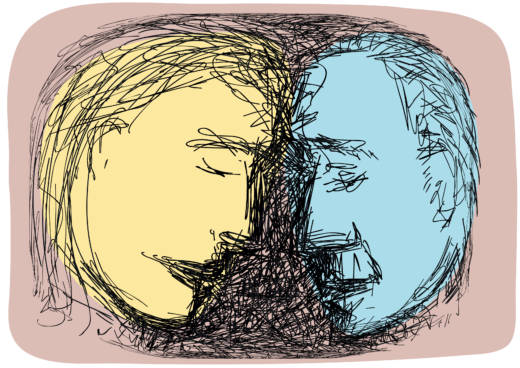“Most people think, ‘Oh well, it’s easy for Harville and Helen to talk about it, but they’re not married to a jerk. I’m married to a jerk,’” Hunt said. “That stuff’s never going to work on my marriage.”
But Hunt says, she and Hendrix could be jerks, too. For years, they were on the brink of divorce. They griped at each other all the time.
They sat on a panel together at the conference with four other couples, all in the relationship therapy business, talking about how they managed to turn things around.
“What we finally decided to do was Go Zero Negative,” said Hendrix, quoting one of the catch-phrases from their presentation.
“We ended the offhand comments like ‘What? Where’d you get an idea like that?’ Or the stare – like, ‘how could you possibly?’” he said. “And what we discovered was that put downs are endemic in human conversation. I didn’t know that we were being so – like everybody else.”
Stopping the negativity is just the start, Hendrix said. Couples have to say nice things to each other, too.
“It’s like a garden,” he said. “You can get the weeds out of the garden, you still don’t get any tomatoes. You have to put stuff in.”
A lot of therapists laugh when people say, “you must never fight with your spouse.” Psychologist Stan Tatkin and his wife run a therapy institute near LA called the Psychobiological Approach to Couples Therapy (PACT) Institute.
“My daughter will say, “you’re a so-called relationship expert, do you really want to be doing that?” said Tatkin, his wife sitting next to him on the panel.
“That,” for Tatkin, means acting like a three-year old when he’s angry. Getting irritable over his wife’s driving, or generally, taking her for granted.
“The patients that I work with are also inspiring to me. And many times I sit through a session and think, ‘I’m going to go home and apologize,’” he said.
He and his wife do have fights, he said, but the key is to resolve them quickly. Don’t let things fester.
Marion Solomon, a psychologist who sees couples in West Hollywood, said she learned from watching her patients what to fight about.
“They argue about things like what restaurant to go to for dinner,” she said. “And after they’ve finished arguing and they agree on it, they argue about ‘How do we get there? What route do we take?’”
She studied attachment theory, and learned that people aren’t really fighting over those little things. They’re stuck in dynamics they had with their mother or father that they’ve recreated with their partner.
Solomon learned to control her reactions when the little things didn’t matter. If something was really important to her husband and not a big deal to her, she gave in. He did the same for her.
“If your partner is under stress, that’s the time to get strong and to get my cortex in line and say I can’t be upset when he’s upset,” she said. In other words, “a good marriage is a partnership where only one partner goes crazy at a time.”
